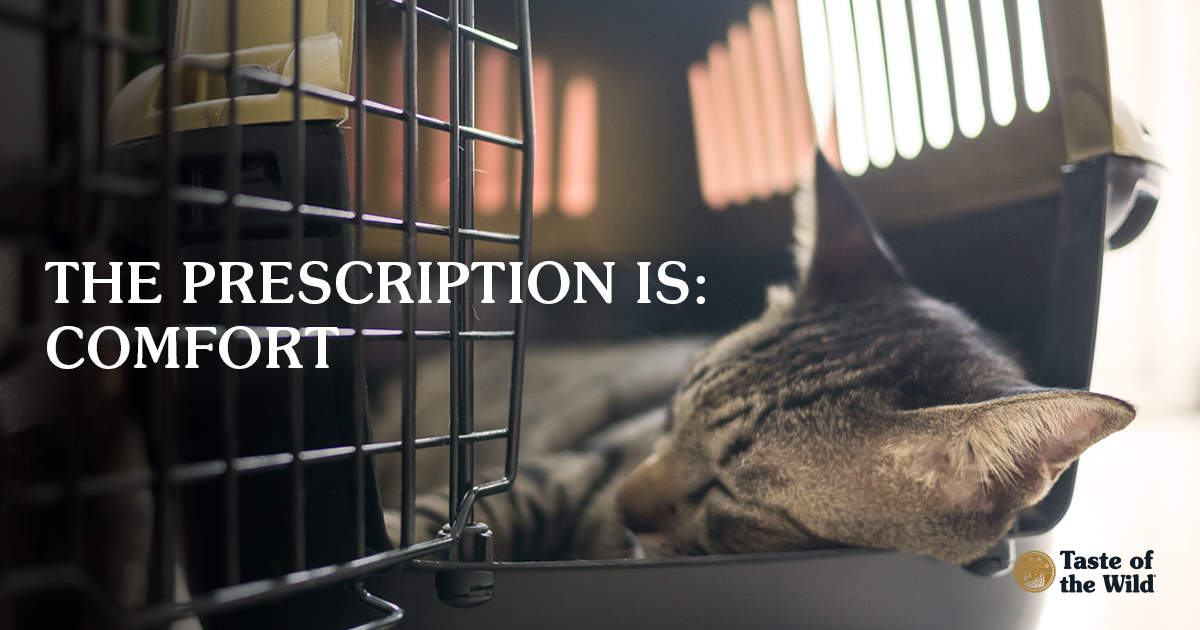
Housecats are homebodies. It’s in their name, after all. Even if you’re parent to a cat that will venture outdoors, a trip in a motor vehicle can take a team of wranglers just to get ol’ Felix into his travel carrier. And if he gets a whiff that the final destination is the veterinarian, you might need to call search and rescue just to find the finicky feline.
In short, taking your cat to the vet is mentally and physically stressful for both cat and owner. But here are a few things you can do to ease the pain. Metaphorically (and potentially physically) speaking.
TAKE YOUR CAT FOR NON-VETERINARIAN-RELATED CAR TRIPS
In almost all cases, the only times a pet cat takes rides in the car, it’s for a not-so-great (from his or her standpoint) reason: trips to the doctor, or maybe an evening away from the favorite humans. So take the occasional chance to mix it up and go for rides for good reasons. Take a spin round the neighborhood and back home, followed by a treat. Take the kitty to the park (if he or she is into that sort of thing). The point here is to make your pointy-eared buddy not freak out every time you grab your keys.
Make a travel carrier the preferred hangout spot
This works on the same principle as those “fun” car trips. If you can help your cat associate the travel carrier with good things, like toys or treats or just happy hangouts, it won’t take three people wearing leather gloves to get the lil’ rascal into it. This includes getting the right kind of crate. Make sure it’s big enough that the cat can fully stand and stretch. Throw in a blanket that smells like kitty’s favorite folks. Make sure the door to the crate is handy; if he or she does put up a struggle, you want a big enough opening that you don’t have to worry about squeezing an angry cat through it. Consider a top-loader for this same reason.
If the crate is a “home away from home,” it’ll feel like a safe space on the ride to the appointment. So take some time in advance to create these good vibes. Your cat will appreciate it for more than just road trips.
Leave the crate closed until safe and sound
It may be tempting to take your buddy out of the crate while in the waiting room, either for comfort snuggles or just to show him or her off to others. Bad idea! You never know how a stressed cat will react to sudden freedom — especially if there are other animals or animals smells around — so make sure to leave the cat in the cozy crate until you’re safely in the exam room where Kitty can’t run off or hurt itself or others.
Get used to examinations
Even the gentlest veterinarian is going to poke and prod your cat in ways that he or she isn’t used to being poked or prodded. By the time the doc starts the exam, we’ve had — at minimum — a stressful journey. Your cat is already on edge, and now here comes a stranger looking for ribs and checking teeth. It’s weird!
You can make it less weird by mimicking a veterinarian’s exam at home as part of your routine. Obviously, you can’t ever fully replicate a trip to the pet doctor. But you can get Kitty used to being “handled” in similar ways. Regularly checking its teeth, paws, weight and skin is something that can ward off problems in the future, as well.
Know what to ask
If you have prepared questions going into the visit, you can shorten the length of many appointments, and that’s less time that your cat will be stressed. Get in and get out! You’ll be back home before you know it.
Just be sure to give your little pal extra snuggles and treats to make up for the trauma. They won’t hold it against you. For too long.
The information in this blog has been developed with our veterinarian and is designed to help educate pet parents. If you have questions or concerns about your pet's health or nutrition, please talk with your veterinarian.
